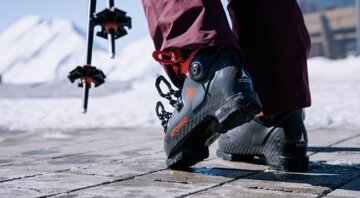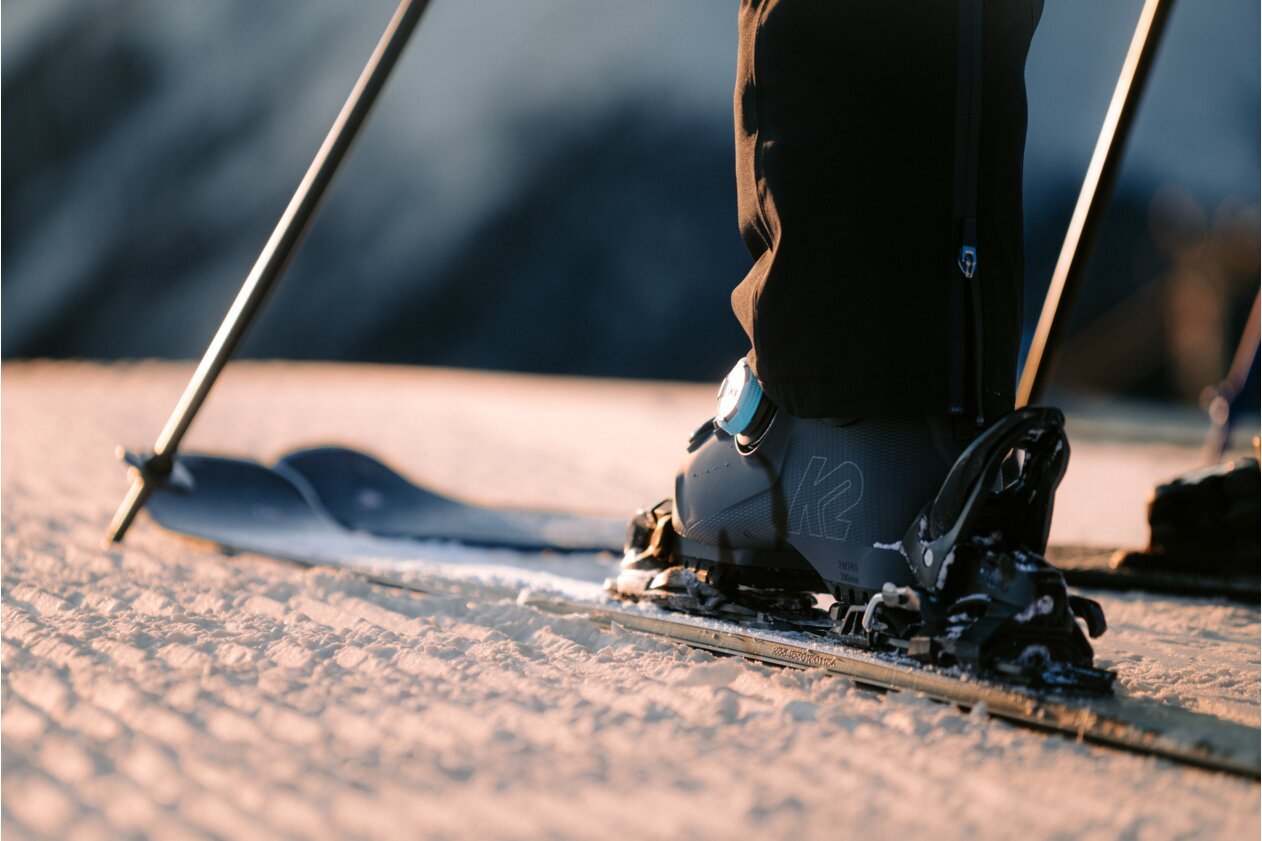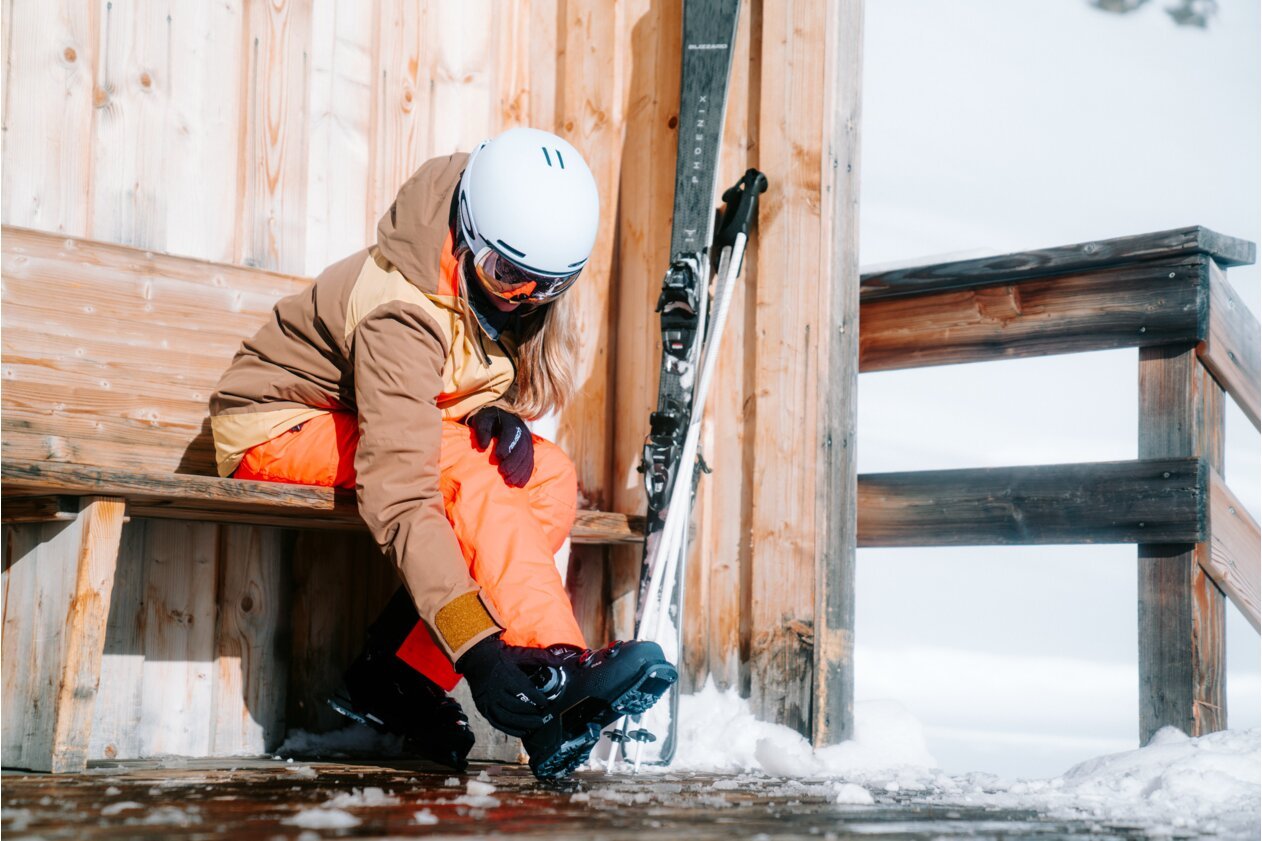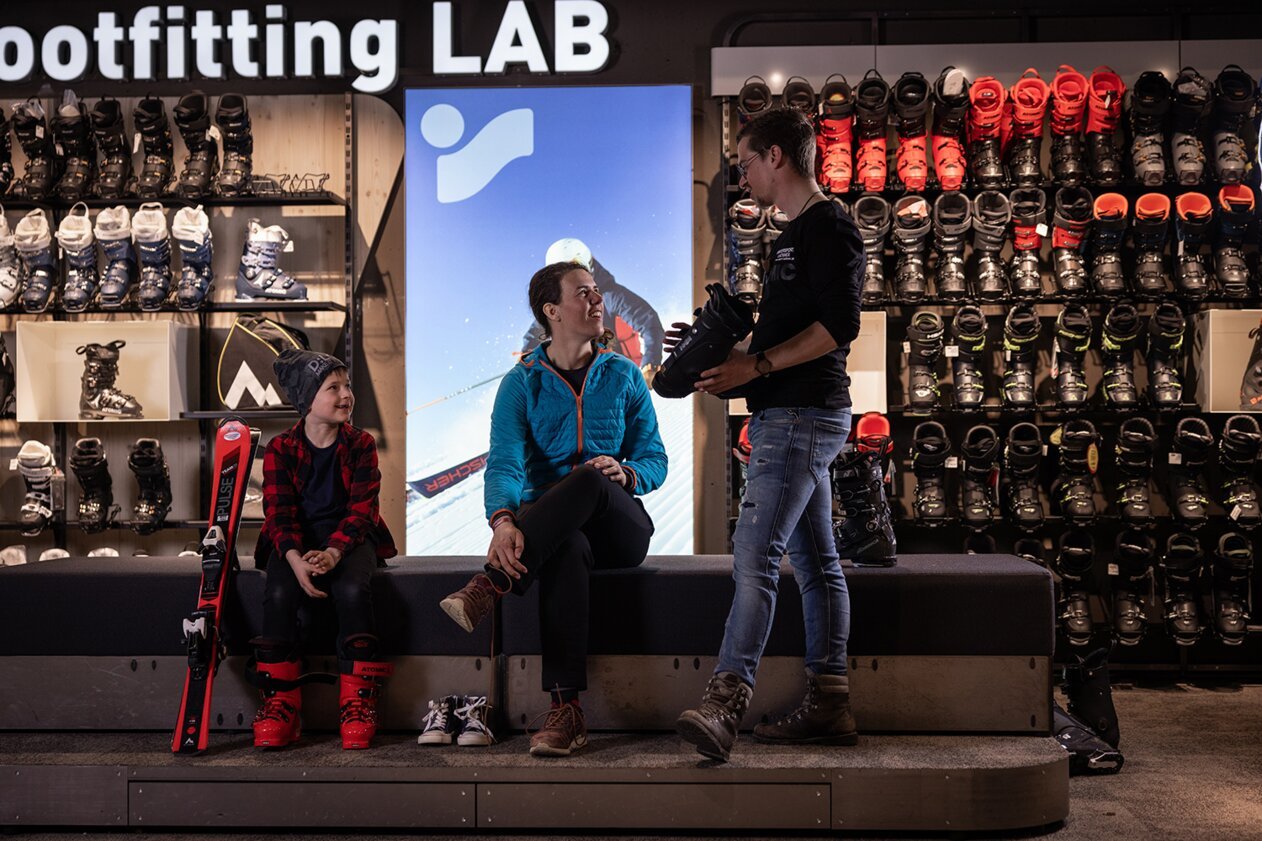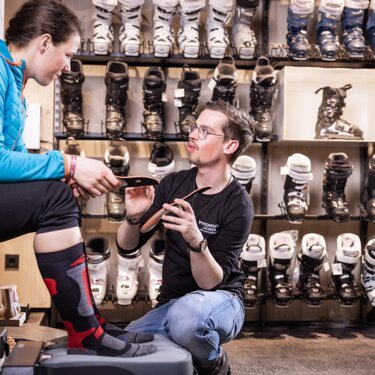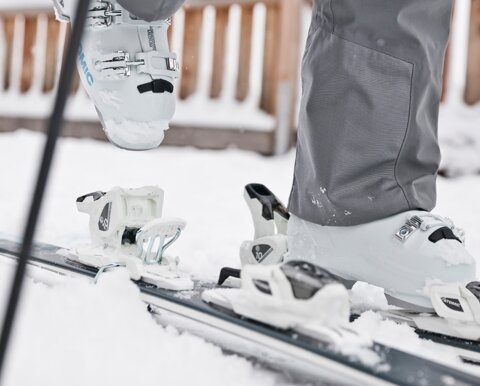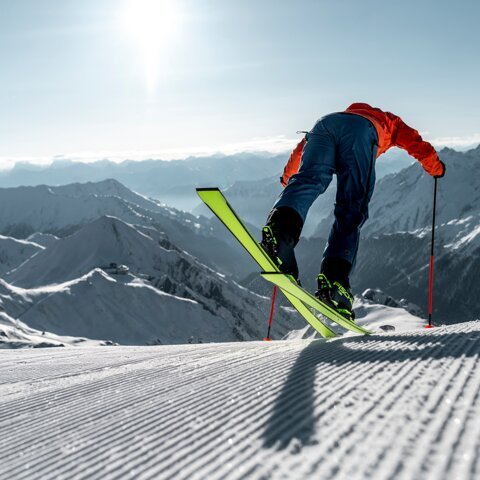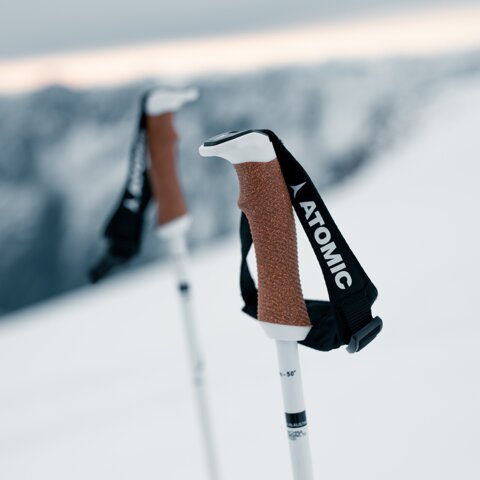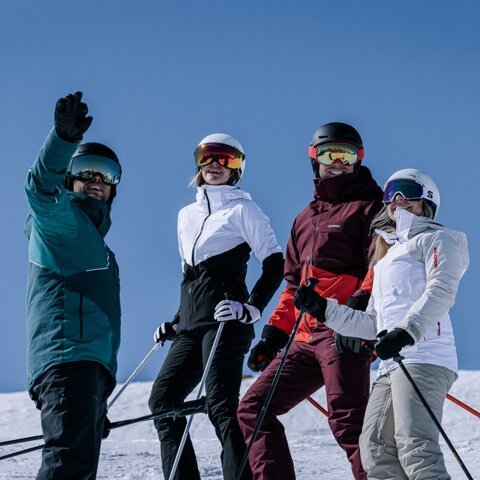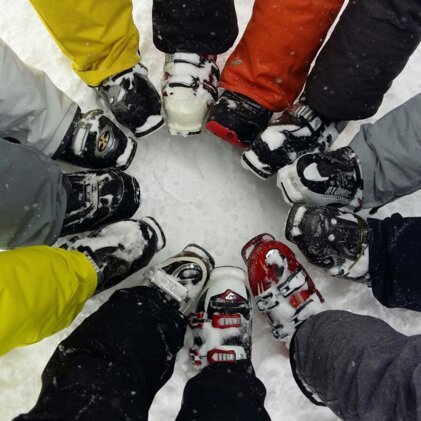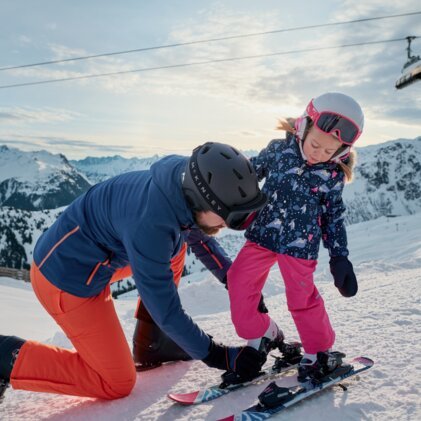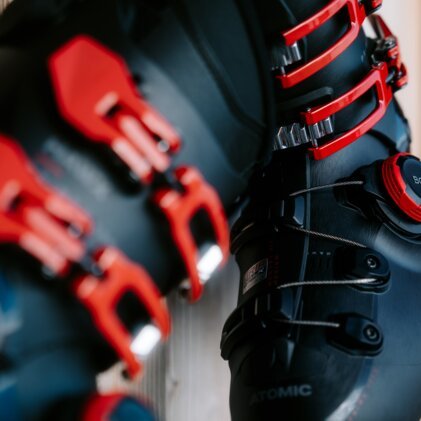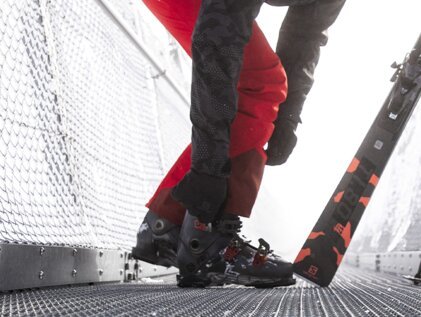All you need to know about ski boots: features, sizing and more!
Left, right, left and straight ahead! Did you know that ski boots not only transmit your leg movements to the skis via the bindings, but are also largely responsible for your comfort on the slopes? Power transmission is one of the most important functions of a ski boot. Just as important is keeping your feet warm, protected and comfortable on long days in the snow.
Whether you are looking for ski boots for men, women or kids, we can provide you valuable knowledge about ski boot sizes, insoles, etc. to ensure that your boots fit perfectly and suit your individual preferences. Or get professional advice from RENTertainers – our winter sports experts – at one of over 800 locations. It's best to combine the two and start your next ski adventure with the perfect equipment!
First choice: all-mountain ski boots
All-mountain ski boots are becoming increasingly popular, and for good reason: Like all-mountain skis, they are one of the most versatile options on the mountain. From groomed slopes to deep powder, these boots are versatile and offer many benefits.
The benefits at a glance
- Versatility: Perfect for a variety of conditions and surfaces.
- High comfort: Ideal for long days in the snow.
- Good insulation: Keeps your feet warm in sub-zero temperatures.
- Relatively soft flex: Particularly comfortable for recreational skiers and beginners.
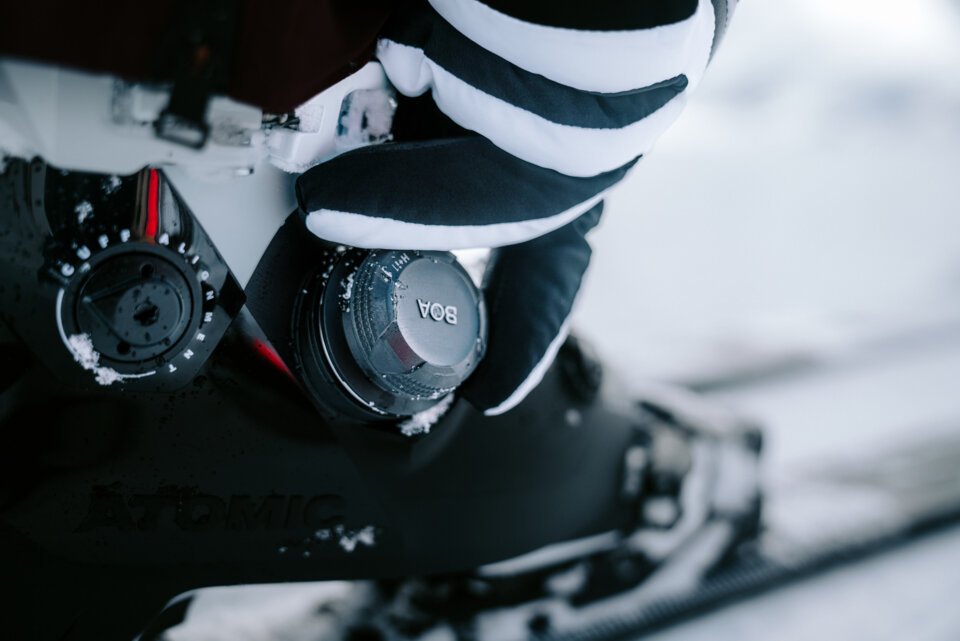
How is a ski boot constructed?
Basically, a ski boot is made up of the following four main components, which are crucial for comfort and functionality when skiing:
- Shell (outer boot): This must be as rigid and light as possible to ensure stability and precise power transmission to the ski.
- Cuff: The upper, flexible part of the outer boot that supports freedom of movement.
- Inner boot: It should have a breathable membrane to ensure a pleasant microclimate within the boot. Boots made from thermoformable materials can be customised to your individual foot shape.
- Fastening system: Buckles vary in number, length and orientation. An additional Velcro closure at shin height provides a better fit. Make sure that the boot is easy to open and close, even when wearing ski gloves.
However, men’s and women’s ski boots often differ in their specific fit: Ski boots for men tend to have wider lasts and higher cuffs to ensure optimum comfort and support. There are also differences between the various brands.
Tip: Remember that your ski boot must be compatible with your ski bindings! This is guaranteed by standards such as the Alpine standard (ISO 5355) or the Touring standard (ISO 9532).
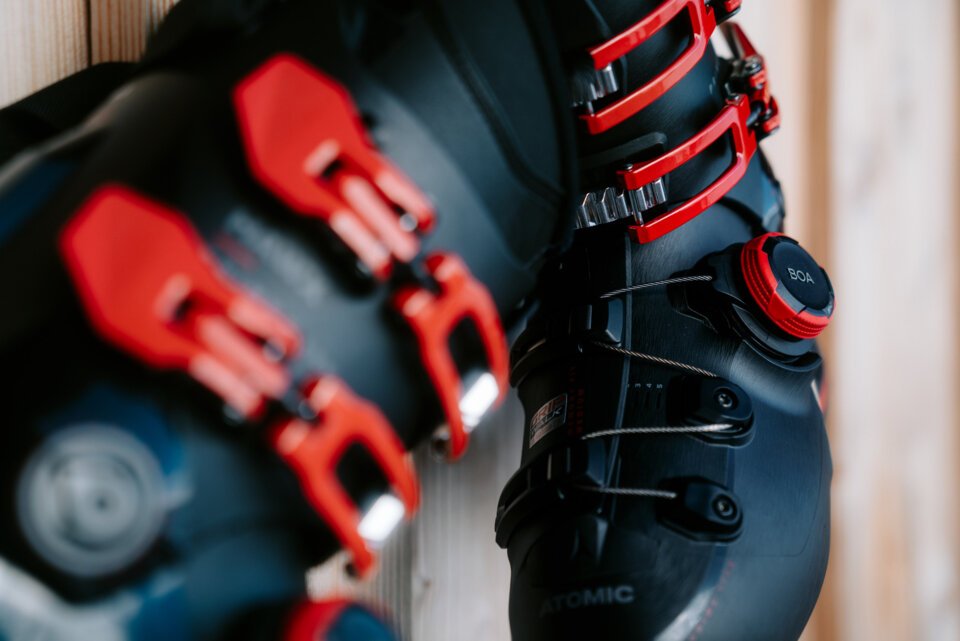
Differences in ski boots
All-mountain ski boots cover a wide range of applications. Which boot is best for you and your equipment best depends entirely on your needs, skiing style and comfort requirements:
Which ski boot type are you?
- Comfort and enjoyment: Do you like to ski relaxed? Make sure the inner boot is well padded and that the boots offer enough freedom of movement.
- Performance: For athletic skiers, a mix of control and comfort is important. The shell should be slightly harder to ensure more precise power transmission to the ski.
- Speed: If your focus is on speed, the most important thing is perfect and precise power transmission. This is why racers prefer firm, close-fitting ski boots with a hard shell - comfort takes a back seat.
- Freeride: Away from the groomed slopes, cushioning and manoeuvrability are key. Deep powder adventures call for a low shaft and good cushioning. Freeride boots are specifically designed to meet these needs and provide maximum comfort.
The flex value of ski boots
The flex value of a ski boot, or flex for short, is a key factor in its stiffness and skiing performance. It indicates how well the boot resists forward pressure on the shin. The lower the flex, the softer the ski boot - ideal for comfortable movement. The higher the flex, the stiffer and more precise the boot - perfect for control and power transfer to the ski. Flex is usually between 60 and 140.
Which flex is right for you?
Choose the right flex value to optimise your ski equipment:
- Soft boot (flex 60-90): Extremely comfortable with good cushioning, ideal for beginners and recreational skiers.
- Medium flex (flex 90-110): A good balance of comfort and control for advanced skiers.
- Hard boot (flex 110-140): Maximum control and precision for advanced skiers and high speeds.
Tip: The flex value should be adapted to your weight, your skiing style and skiing conditions.
Not sure which flex value is right for you? At INTERSPORT Rent, our winter sports experts will help you find the ideal boots for you. Get advice and try different models from various brands to find the perfect boots for your skis!
Characteristics of a good ski boot
What characteristics should a ski boot definitely have? Ideally, they should meet the following criteria:
- Lightweight: Lightweight boots are easier to walk and improve your skiing experience.
- Waterproof: Modern ski boots are completely waterproof thanks to special materials and constructions.
- Warm: Insulating padding in the inner boot keeps your feet warm even in sub-zero temperatures.
- Comfortable: The right flex value and a well-cushioned inner boot ensure a comfortable fit.
Tip: Do you often get cold feet? Heated insoles for ski boots are the perfect accessories to your equipment. They provide constant warmth and help you to maintain your performance on the snow.
Customized ski boot fitting
Fit is the key to comfortable, high-performance ski boots. A boot fitting is the process of customising the inner boot to the shape of your foot so that it fits perfectly and does not pinch. This is often done using thermal moulding or other fitting techniques. The result: your ski boot fits like a second skin - without pressure points or friction.
Tip: Many INTERSPORT Rent stores offer a ski boot fitting service. Simply bring your ski boots in and have them fitted by our experts. After fitting, your boots will fit like a glove – for an incomparable skiing experience.
The right ski boot size
Getting the right size of ski boots is crucial to achieving your full potential on the slopes. A perfectly fitting boot ensures precise power transmission to the skis, as well as comfort. The following factors should be taken into consideration when choosing the right size:
- Foot length: Size is determined by the Mondopoint system based on the foot length in centimetres. Also note the different widths for men's and women's boots.
- Skiing style: Your preferred skiing style will also influence your boot size. Racers prefer tight ski boots, while recreational skiers choose looser styles.
- Anatomy: Ski boots for women, men or kids - they should be specially tailored to the specific needs. Women's ski boots often have narrower lasts, while children's ski boots are often designed to grow with the skier.
Our ski boot sizing chart will help you find the right size quickly.
Tip: When measuring and trying on, wear the same ski socks that you will be wearing on the slopes.
Test your ski boots at INTERSPORT Rent
Take advantage of the rental option and try out ski boots from various brands at one of over 800 INTERSPORT Rent locations. Our experts will provide you with professional advice to help you find the perfect boot for your feet and skiing style.
Frequently asked questions about ski boots
When should I replace my ski boots?
Ski boots should be replaced when they show visible signs of damage, the inner boot no longer fits well or the comfort has deteriorated. However, we recommend that you replace your boots after 8-10 years at the latest.
How do I get my ski boots dry again?
After a day’s skiing, remove the inner boots and air them in a warm, dry place. Use a ski boot dryer if necessary.
How should I store my ski boots?
Ski boots should be stored dry, clean and with the buckles closed in a cool, dry place to maintain their shape and function. Avoid direct sunlight or extreme heat as this can damage the materials. A ski boot bag is ideal for storing your boots safely.
Where can I find the sole length of a ski boot?
The sole length is measured in millimetres on the sole of the boot. It is important that it is compatible with your ski bindings.
What should I wear with my ski boots?
Very essential accessories are thin, breathable ski socks made from functional materials to avoid blisters and pressure points. Make sure you wear the same ski socks when you try on your boots in the store.
